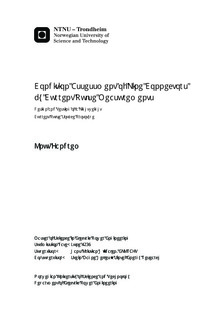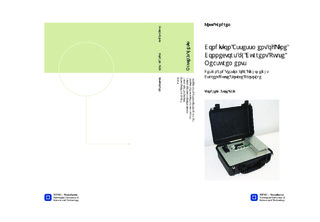| dc.description.abstract | This thesis presents and discusses the development, design and testing of a lightweight current pulse source prototype used for condition assessment of line connectors. The thesis is a continuation of a student project conducted in the fall semester of 2014 with the title "Condition Assessment of Line Connectors by Current Pulse Measurements - Effect of Reduced Pulse Rise Time And Connection Cable Cross Section". The student project looked into how weight and size could be removed from the present pulse source design, both by a reduced capacitor bank and by reduced connection cable cross section. The results from this project lead to the development of the lightweight pulse source prototype.The design and development is divided into three sections. Initially, the overall idea and generalization of the design is presented and discussed. Secondly, based on this conceptualization the design is broken down to each major component. These components were the battery, thyristor, capacitor bank, microcontroller, DC-DC Converter, and user interface. Their function and design criteria are presented and discussed in the thesis. The thesis also presents the circuit schematics of all the components designed specially for the prototype. Finally, the design is summarized and its weight and size compared to the present pulse source design. The measurements show that new pulse source prototype weights 7.6 kg compared to the 35 kg of the old design and is 47 dm^3 smaller. Note that the weight is measured without the connection cords and measurement equipment. enlargethispage{baselineskip}One of the major differences beside the size and weight is that the present pulse source uses a hardware based sequence control, while the prototype utilizes a microcontroller. This allows a much more flexible system since the behavior of the sequence control can be altered by rewriting the script. The microcontroller and script are presented in detail in the thesis and in the appendix.To verify the design, and to look into how the prototype operates during actual condition assessment measurements, a total of thirteen connectors were assessed. Three of these had an already known condition, while for the rest no prior condition assessment existed. The three connectors with a known state showed that it was possible to reproduce the results from the prior measurements using the pulse source prototype. The ten final connectors were meant to increase the number of measurements to see how the prototype handled during actual assessment tests. These measurements show that the prototype only needed a few alterations to it design to operate satisfactory. These alterations are presented and discussed in the thesis, while the condition assessment of all the connectors is presented in the appendix.In addition to the condition assessment measurements there were also conducted two separate experiments to define the battery capacity and setpoint accuracy of the prototype. The battery capacity test revealed that the battery capacity of the prototype is sufficiently large to supply the unit with power during continuous operation for at least four hours and ten minutes, and deliver 500 consecutive shots. The setpoint accuracy test indicated that the prototype's control sequence was able to reproduce the same current amplitude for the same setpoint with a deviation of only 26.4 A.All the tests performed on the prototype show that it works and operates as intended. Tests have shown that the prototype is able to produce and reproduce current pulses accurately up to and above 6000 A, and that the microcontroller based sequence control functions as intended. | nb_NO |

